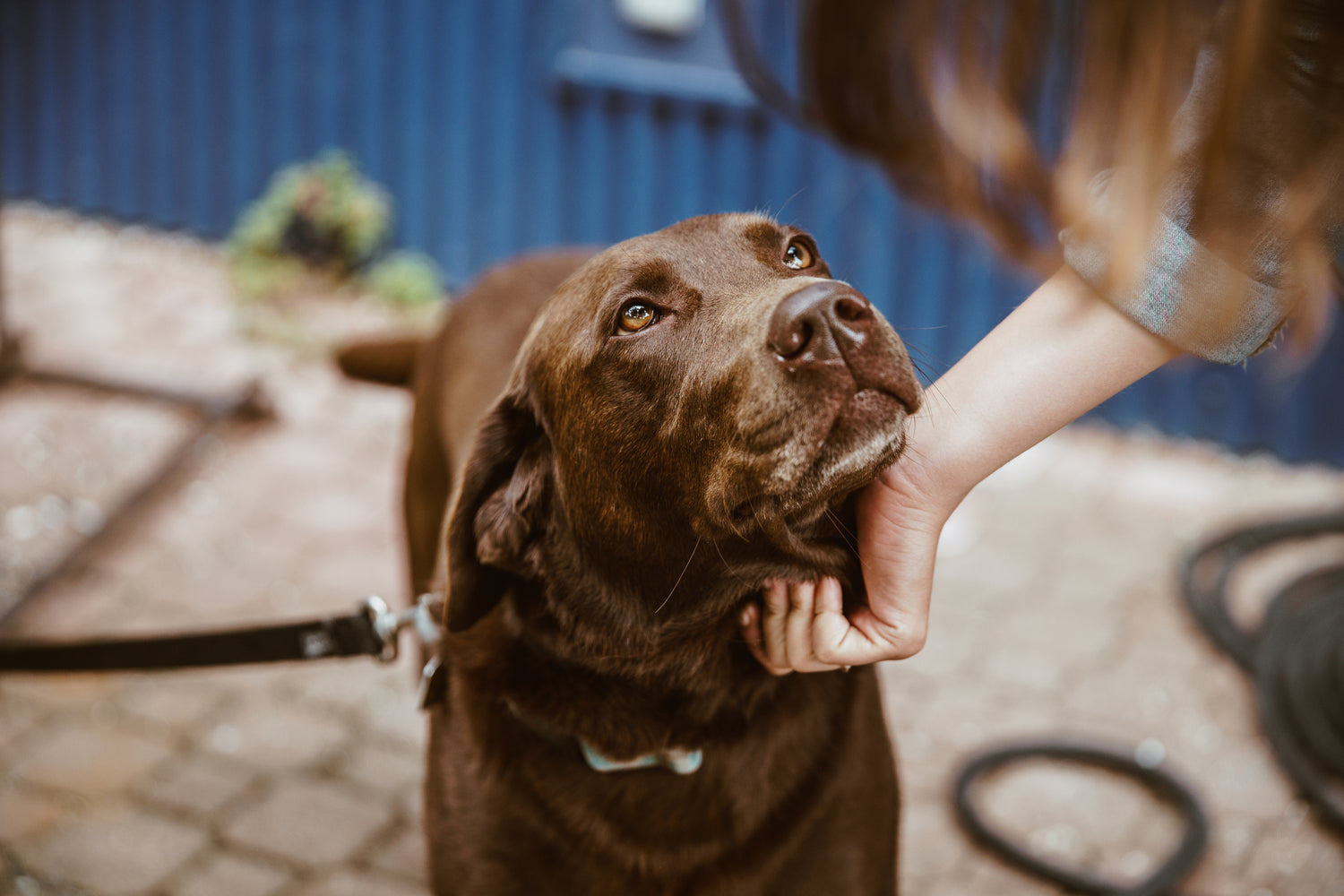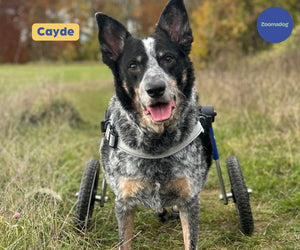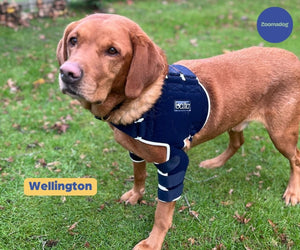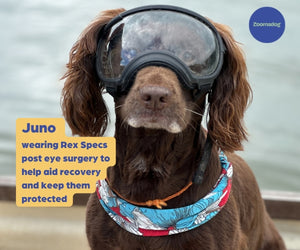01730 622544

Does A Dog Back Brace Prevent IVDD Or Slipped Discs For My Dog?
You may be asking yourself whether a dog back brace is a good IVDD prevention strategy. Can a back brace prevent IVDD in dogs or a slipped disc in your dog? In short, there hasn’t been enough research done to answer this question. Therefore we can’t say that wearing a back brace is a preventative measure for a dog who’s at risk of developing IVDD.
Each individual dog has different needs and circumstances. There may be genetic factors at play that mean however careful you are, your dog will be more likely to develop dog IVDD.
What is IVDD?
IVDD (Intervertebral Disc Disease) in dogs is a term covering a spinal condition where the spinal cord degenerates, resulting in the canine equivalent of a slipped disc. Symptoms can appear suddenly or slowly, depending on the type of IVDD (Hansen Type 1 or Hansen Type 2).
There’s a genetic component to dog IVDD - some breeds are more high risk IVDD dog breeds i.e. these breeds are statistically more at risk of developing IVDD - however, any dog of any breed can suffer from IVDD.
An IVDD Hansen Type 1 episode can be brought on by a sudden ‘wrong’ movement or forceful impact. It seems sudden but the jelly-like material between each disc, which cushions the spine, has actually hardened over time. This now protrudes up into the spinal cord and spinal nerves, causing mobility issues or maybe even paralysis.
IVDD Hansen Type 2 takes place over time. The jelly-like material has hardened and gradually begins to push up and intrude into the spinal cord, causing compression of the spinal cord and long-term pain. Progressive paralysis is also a possibility as a result of IVDD Hansen Type 2.
If your dog’s suddenly developed paralysis, treat it as a medical emergency.
Otherwise, with IVDD in dogs, you notice your dog exhibiting back pain, loss of coordination (ataxia), general weakness or paralysis in their hind legs, paw knuckling, sudden loss of bladder control, reduced movement, or out of character general anxiety. If you see any of these signs, then it’s time to take your dog to the vet as these are all symptoms of intervertebral disc disease in dogs.
Once your dog’s had an IVDD diagnosis confirmed, your vet will advise a treatment plan depending on the severity of IVDD. There are 5 levels of dog IVDD. Levels 4 and 5 will generally require surgery.
IVDD and Conservative Management
If your dog doesn't need surgery, it's highly likely your vet will suggest conservative management as canine IVDD treatment instead. This will involve crate rest, anti-inflammatories / pain relief medication, rehabilitation and physiotherapy, and weight management.
To give your dog’s back extra support, this is where the dog back brace comes in. A back brace can also be an extremely useful tool during conservative management.
What we can say for certain is that a back brace for dogs can indeed offer valuable support along their spine, promote a straighter back, relieve pressure on the discs, and offer stabilisation to the spine by limiting the excessive movement that may contribute to spinal issues. The flexibility of a back brace, as opposed to a rigid cast, allows the spinal and core muscles to continue moving and engaging, avoiding them atrophying.
However, it’s crucial to recognise that a back brace isn’t a magical shield against all things IVDD.
Regular exercise, a balanced diet, and close consultation with your veterinarian are equally vital in keeping your dog happy and healthy and a good approach to preventing IVDD in dogs. Nonetheless, however careful you've been, dog IVDD might still be inevitable for your dog.
Conclusion
IVDD is a condition that can really affect your dog’s mobility. However, ensuring that your dog receives the appropriate treatment and care means that in many Level 1 to 3 cases, a dog can make a partial or complete recovery. Even when there’s paralysis, there are strategies, e.g. getting a wheelchair, that can keep your dog mobile and with a good quality of life.
Dog back braces can be helpful at providing support and comfort for your dog’s back, as well as offering some level of pain relief, while your dog’s suffering from IVDD. Speak to your vet or physiotherapist about the appropriate time to introduce a back brace into your dog’s treatment plan. They can also be used to aid with post-operative recovery.
Read further about Non-Surgical and Conservative Management IVDD treatments here: https://zoomadog.co.uk/collections/conservative-management-ivdd
Read more about IVDD Causes, Prevention, Early Signs of IVDD in Dogs, and Help at Home: https://zoomadog.co.uk/collections/dog-ivdd-or-intervertebral-disc-disease
Find the best dog Back Braces here: https://zoomadog.co.uk/collections/dog-back-braces

Looking for help with your dog?
We can help find the right solution for your dog
Feel free to give us a call on 01730 622544
or email us at woof@zoomadog.co.uk







Leave a comment